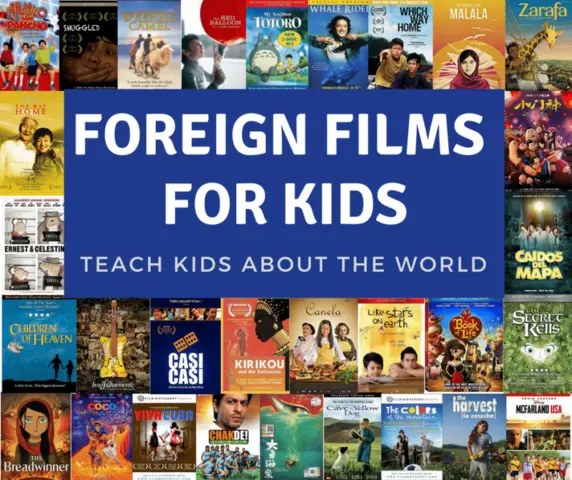The Step-by-Step Guide to Distributing Movies to Cinemas
Releasing a movie in cinemas is no small feat. It requires a lot of hard work, some luck and a lot of coordination. If you’re a budding filmmaker, you’ll want to know the steps you need to take to get your movie out to cinemas. Here’s a quick guide to how movies get to cinemas.
Step 1: Make a Great Movie
The first step to getting your movie out to cinemas is to actually make the movie. This means writing a great script, choosing the right actors, filming, editing and producing the movie. Creating a great movie is the first step to getting your movie into cinemas.
Step 2: Get a Distributor
Once you’ve made the movie, you’ll need to find a distributor. A distributor is a company that specializes in getting movies out to cinemas. They will help you market the movie, negotiate with cinemas and get your movie in front of the right people. Finding a distributor can be tricky, so make sure you do your research.
Step 3: Reach Out to Cinemas
Once you have a distributor, they will be able to help you reach out to cinemas. You’ll need to negotiate a deal with the cinema, which will involve you giving them a percentage of the ticket sales. This can be tricky, so make sure you get a good deal.
Step 4: Promote the Movie
Once you’ve reached a deal with the cinema, you’ll need to start promoting the movie. This means creating posters, trailers and other promotional material that will get people interested in the movie. You’ll also need to do press releases, interviews and other promotional activities to get the word out.
Step 5: Open the Movie
The final step is to open the movie. This means setting a release date and making sure everything is ready to go. You’ll need to coordinate with the cinemas to make sure the movie will be playing at the right times and in the right locations. Once the movie is open, it’s time to sit back and enjoy the show.
How the Major Movie Studios Get Their Films to the Big Screen
Getting a movie from an idea to the big screen is a long and complicated process. Major movie studios have a number of steps they take to make sure their films make it from concept to theater. From development to distribution, the whole process is managed by the studio. Here's how they make it happen.
Development
The first step in the process is development. This is when the studio finds a good idea, then shapes it into a movie. The studio finds the right writers, directors, and producers, and then puts together a team to turn the idea into a film. The studio also provides the funding for the project and oversees the creative process.
Pre-Production
Once the idea is ready, the studio moves into pre-production. This is when the studio hires the cast and crew, arranges for locations and equipment, and puts together a budget. The studio also takes care of the legal aspects of the movie, such as copyright and contracts.
Production
When everything is in place, the studio moves into production. This is when the movie is actually filmed. The studio oversees the filming process, making sure the movie stays on schedule and within budget. The studio also makes sure the cast and crew are taken care of, and that the actors and actresses are doing their jobs.
Post-Production
When the filming is done, the studio moves into post-production. This is when the movie is edited and all the visual and sound effects are added. The studio also takes care of the music and sound mixing, and oversees the color correction. The studio also works on the marketing and distribution of the movie.
Distribution
The last step in the process is distribution. This is when the studio arranges for the movie to be released in theaters and on other media. The studio works with theater chains to arrange for screenings, and also works with video-on-demand services and other outlets to make sure the movie can be seen by audiences. The studio also handles the promotion of the movie, making sure it gets seen by as many people as possible.
The Secrets Behind How Movies Reach Cinemas Around the World
From Hollywood blockbusters to foreign films, movie theaters are constantly offering a wide array of films for viewers to enjoy. But have you ever wondered how movies actually get to the theaters? It turns out that the process is more complicated than you might think!
The first step in getting a movie to the theaters is the acquisition process. This is when movie theater owners decide which movies they want to show. This can be done through a variety of methods, including film festivals, screenings, and direct contact with producers. Once a movie is acquired, the theater owners will then negotiate a release date, terms for the showing, and promotional opportunities.
Once the acquisition process is complete, the theater must then prepare for the release. This includes setting up promotional materials such as posters, trailers, and other marketing campaigns. It is also during this time that theater owners will negotiate with the film distributors to determine the price of admission and any additional fees associated with the screening.
Finally, the movie is ready to be released. This typically involves a series of screenings at different theaters, usually in different countries, before the movie is released to the general public. This allows the theater owners to gauge audience reactions and make any necessary changes or adjustments before the movie is released worldwide.
So, there you have it! The process of getting a movie to theaters is much more complex than you might think. From the acquisition process to the promotional materials and screenings, there is a lot that goes into getting a movie to the big screen. But in the end, it is all worth it when the audience can finally enjoy the movie.
The Pros and Cons of Different Movie Distribution Strategies
Getting movies to the big screen can be a complicated process, with numerous variables and strategies to consider. In this article, we will discuss the pros and cons of the different movie distribution strategies available to filmmakers.
Theater Release
One of the most common ways to get a movie to cinemas is through a theatrical release. This involves the film being released in cinemas across the country, with the anticipation of it being seen by the largest amount of people. The main benefit of this distribution strategy is the potential for box office success. It also provides an opportunity for press coverage and awards nominations, which can help to boost the movie’s profile. However, it can be expensive and risky, as there is no guarantee that it will be successful. Additionally, there can be long delays between the film’s release and its availability on home media formats.
Digital Release
In recent years, digital releases have become increasingly popular. This involves the film being released on platforms such as iTunes, Amazon Video, Vimeo, and other digital services. The main benefit of this strategy is that it can reach a wide audience without the need for a theater release. It also provides an opportunity for the filmmaker to retain control over the release and pricing, allowing them to maximize profits. On the downside, digital releases can be expensive to set up and may not reach as wide an audience as a theater release.
Video on Demand (VOD)
Video on Demand (VOD) is a popular option for filmmakers who want to make their film available to the public without the need for a theatrical release. This involves the film being made available to rent or purchase on platforms such as iTunes, Amazon Video, and Vimeo. The main benefit of VOD is that it can reach a wide audience without the need for a theater release. It also provides an opportunity for the filmmaker to retain control over the release and pricing, allowing them to maximize profits. On the downside, VOD releases can be expensive to set up and may not reach as wide an audience as a theater release.
Direct-to-Consumer (D2C)
Direct-to-Consumer (D2C) is a newer distribution strategy that involves the filmmaker releasing their film directly to the public via their own website or other digital services. The main benefit of this strategy is that it can reach a wide audience without the need for a theater release. It also provides an opportunity for the filmmaker to retain control over the release and pricing, allowing them to maximize profits. On the downside, D2C releases can be expensive to set up and may not reach as wide an audience as a theater release.
Festivals and Screenings
Another way to get a movie to audiences is by entering it into festivals and screenings. This involves the film being screened at film festivals, art galleries, and other venues. The main benefit of this strategy is that it can provide an opportunity for the film to be seen by industry professionals, who may be interested in distributing the film. It can also be a great way to build up hype for the film and generate publicity. However, it can be expensive and time consuming, with no guarantee that the film will be accepted into the festivals.
Exploring the Different Ways Movies Reach Cinemas and Audiences
Movie-goers love nothing more than heading to the cinema to watch the latest blockbuster. Have you ever wondered how these movies get there? How do they make their way from the production studio to the big screen?
There are several ways that movies make it to cinemas and ultimately to audiences. The first are traditional distributors, who take care of the movie's release and promotion. Distributors are responsible for finding the right theatres and negotiating film rental fees. They also work to ensure proper promotion of the movie in order to draw as large an audience as possible. This includes advertising and marketing campaigns, which can range from posters and trailers to social media campaigns and television spots.
Another way for movies to reach cinemas is through film festivals. These festivals provide a platform for independent and low-budget films to be seen by a larger audience. Film festivals often feature a variety of movies from different genres, allowing audiences to discover new movies that they may not have seen in the mainstream. Independent films are often released through film festivals and then picked up by distributors for wider release.
Finally, streaming services such as Netflix, Amazon and Hulu have become increasingly popular ways for audiences to watch movies. These services offer a wide selection of movies and TV shows, making it easier than ever for consumers to watch movies in the comfort of their own homes. Streaming services also offer exclusive content, allowing audiences to watch movies that may not be available in cinemas.
Movies can reach cinemas and audiences in a variety of ways. Traditional distributors, film festivals and streaming services all provide opportunities for audiences to view the latest releases. As technology continues to evolve, the ways in which movies reach cinemas and audiences will continue to change and adapt.


